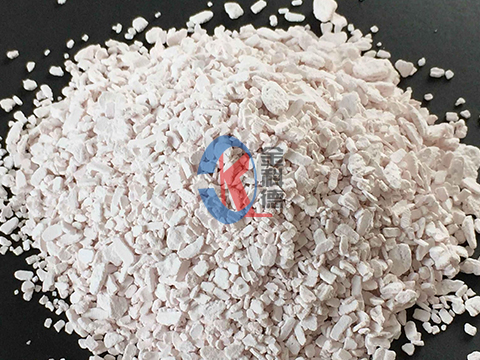Jim.Liu ( International Department Manager)
Tel: 0086-518-80868863
Fax:0086-518-80868879
Email: sales01@lygkede.com
Lisa Ji ( Sales Representative)
Tel: 0086-518-80868884
Fax:0086-518-80868879
Email: sales04@lygkede.com
Common applications for calcium chloride include brines used in refrigeration equipment, road ice melting agents, and desiccants. Because it is easily deliquescent in the air, the anhydrous calcium chloride must be sealed and stored in the container. Food grade calcium chloride is one of the classifications of calcium chloride. Food grade calcium chloride is white powder or flake. It has no bitter taste and is extremely hygroscopic. It is highly deliquescent and easily soluble in the air. The water and the aqueous solution are clear and transparent, and at the same time, a large amount of heat is released, which is soluble in alcohol, acetone, acetic acid and the like.

Commonly used calcium chloride preparation methods:
1. Calcium chloride dihydrate (dehydration method) method:
The edible calcium chloride dihydrate is dried and dehydrated at 200 to 300 ° C to obtain a finished anhydrous calcium chloride product.
Its chemical reaction equation: CaCl2·2H2O--[260°C]→CaCl2+2H2O
For the neutral calcium chloride solution, a spray drying tower can be used, and spray drying and dehydration can be carried out under a hot air flow at 300 ° C to obtain a powdered product of anhydrous calcium chloride.
2. Spray drying dehydration method: the refined neutral calcium chloride solution from which arsenic and heavy metals have been removed is sprayed into the mist from above the spray drying tower through a nozzle, and subjected to countercurrent contact with a hot gas stream of 300 ° C to achieve dry dehydration, thereby obtaining a powdery shape. Water calcium chloride, the finished product of edible anhydrous calcium chloride.
3. Mother liquor method:
The mother liquor prepared by the ammonia-alkali method is obtained by adding lime milk to obtain an aqueous solution, which is evaporated, concentrated, cooled and solidified.
4, metathesis method:
It is obtained by the action of calcium carbonate (limestone) and hydrochloric acid.
Chemical reaction equation: CaCO3 + 2HCl = CaCl2 + H2O + CO2 ↑.
After the above steps are completed, heat to 260 degrees Celsius and evaporate and dehydrate.
5. Refinement method:
The by-products in the production of sodium hypochlorite are refined.
A by-product of the Solvay process for preparing sodium carbonate is refined.

Copyright © http://en.lygkede.com/ Lianyungang Kede Food Ingredients Co.,Ltd Specializing inCalcium Phosphate,Sodium phosphates,Potassium phosphates,Welcome to inquire!
苏ICP备15040077号 Powered by Clouds platform Technical Support:JiuShan
Recommended products | Main area: Jiangsu Shanghai Beijing
 |